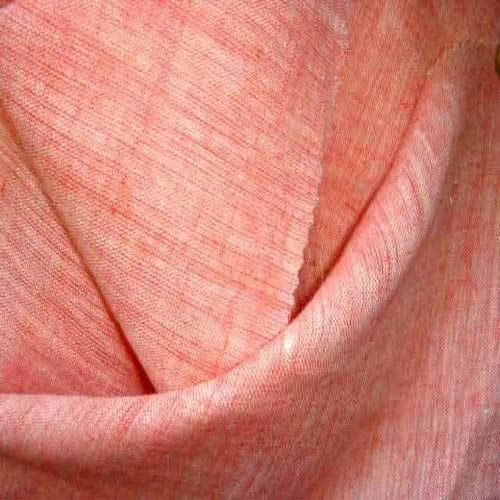In an age where fashion is shifting toward intentional style, minimalist design has taken center stage. Clean lines, neutral tones, and understated elegance define this aesthetic—but it’s the fabric choice that often determines whether a minimalist piece feels flat or refined. Among the array of textiles available, crepe fabric for dresses stands out as a subtle yet powerful force in bringing minimalist dress designs to life.
Crepe, with its matte texture and fluid drape, lends itself beautifully to simplicity. It doesn’t rely on embellishments or excessive detailing to make a statement. Instead, it enhances silhouettes through its natural flow, allowing the cut and structure of a garment to take precedence. This makes it the perfect canvas for designers looking to create timeless, versatile pieces.
What Makes Crepe Ideal for Minimalist Fashion
Minimalist fashion demands more from less. There’s no hiding behind flashy prints or intricate embroidery; every seam, fold, and fabric must serve a purpose. That’s where crepe excels. Unlike shiny or stiff materials, crepe’s soft surface and slightly pebbled texture add visual depth without distraction. It’s a textile that communicates luxury through restraint.
Its inherent properties—lightweight yet substantial, structured yet flexible—allow designers to sculpt garments with precision. Whether in a midi slip dress or a structured wrap dress, crepe adapts beautifully to a wide range of minimalist styles.
Moreover, crepe has a unique ability to maintain shape without clinging. This ensures that the overall silhouette remains clean and polished, which is the cornerstone of minimalist design.
Fluidity and Movement in Design
One of crepe’s most celebrated characteristics is its fluidity. The way it moves with the body enhances even the most basic of designs. A-line skirts sway gently, long dresses glide as you walk, and tailored cuts retain a soft edge—all thanks to crepe’s graceful drape.
This quality makes it particularly suitable for minimalist eveningwear or elevated everyday looks. Instead of using pleats or ruffles to create volume, designers can rely on the fabric’s natural flow to bring life to the garment. As a result, the finished piece looks effortlessly elegant without relying on excess.
A Matte Finish That Radiates Sophistication
Unlike fabrics with a high sheen—such as satin or silk—crepe offers a subdued matte finish. This texture enhances the minimalist appeal by avoiding flashiness while still looking refined. The matte quality gives crepe a grounded, modern elegance that works across color palettes, from soft neutrals to bold monochromes.
This understated finish also makes crepe incredibly photogenic. It captures shadows and structure in a flattering way, giving dresses a sculptural quality that feels deliberate and high-end. Whether you're on the runway or walking into a boardroom, a crepe dress offers quiet confidence.
Design Versatility Without Compromising Simplicity
Though minimalist fashion is known for its simplicity, it doesn’t mean it’s one-note. Crepe allows designers to experiment with tailoring, layering, and asymmetry while still preserving a clean overall look. It works well with various dress styles, including sheath, wrap, bias-cut, and shirt dresses.
Because crepe is easy to cut and sew, it gives room for precise tailoring—a must in minimalist fashion where construction is everything. Subtle darts, architectural folds, or gently flared hems come to life through the balance of structure and softness that crepe provides.
For example, a high-neck, sleeveless crepe midi dress can exude power and grace without needing a single embellishment. Add a belt, and the look shifts from relaxed to structured—all without changing the core simplicity of the design.
Seasonal Flexibility and Everyday Wearability
One of the reasons crepe fabric for dresses is so popular among minimalist designers is its year-round versatility. Lightweight versions are ideal for spring and summer, offering breathability and comfort without compromising elegance. Meanwhile, heavier crepe blends lend warmth and structure, making them perfect for layering during cooler months.
Its wrinkle-resistant nature also makes crepe incredibly wearable for daily life. Minimalist fashion often leans toward practicality, and crepe aligns perfectly with that goal—easy to care for, travel-friendly, and comfortable for long hours.
Sustainability and Timeless Appeal
As more designers and consumers embrace sustainable fashion, timeless fabrics like crepe are gaining traction. Its adaptability across seasons, styles, and settings makes it a smart, long-term investment. Minimalist wardrobes are often built on the concept of fewer, better pieces—and crepe dresses fit seamlessly into that ethos.
Because crepe fabric for dresses doesn’t go out of style, it aligns perfectly with the movement toward slow fashion. A well-made crepe dress can be worn in countless ways, dressed up or down, and cherished for years.
Final Thoughts
In the world of minimalist fashion, every detail matters—and fabric is the foundation. Crepe’s balance of softness, structure, and subtle texture makes it a standout choice for designers aiming to create elegant, enduring garments. It supports clean lines, enhances movement, and radiates sophistication without demanding attention.
Whether you’re curating a capsule wardrobe or designing your next collection, crepe offers the ideal canvas for minimalist dress design. It’s proof that sometimes, less truly is more—especially when the crepe fabric does the talking.



